Record Number Of 815 Birds Discovered In Bus In Smuggling Attempt At Woodlands Checkpoint
On 10 August 2019 at about 7am, a Malaysia-registered bus driven by a 35-year-old male Malaysian was stopped for security checks on arrival at Woodlands Checkpoint.
2 During the course of checks, alert officers from the Immigration & Checkpoints Authority (ICA) detected signs of modification around the rear tyres of the bus. Their suspicions were further aroused when they heard chirping sounds coming from within the bus. Upon scrutiny, the officers uncovered 15 containers of 815 birds from modified compartments above the rear tyres of the bus (See Annex A for photos), making it the largest seizure of ornamental birds in Singapore in recent years. As the driver did not possess valid health certificate and import permits, he was referred to the National Parks Board (NParks) for investigation. The 815 birds comprise five species as follows: 38 White-rumped Shamas, 10 Oriental Magpie-Robins, 141 Oriental White-eyes and 626 Munias (Scaly-breasted Munia and White-headed Munia). Only around 600 of the birds survived and are currently being cared for and quarantined at NParks’ facilities (See Annex B for more information on the bird species).
3 Animals that are smuggled into Singapore are of unknown health status and may introduce exotic diseases, such as bird flu, into the country. The well-being of the animals will also be affected by poor conditions during the transportation process. In addition, the illegal wildlife trade impacts the biodiversity and ecosystems of both source countries and the countries where the wildlife ends up in. For example, the White-rumped Shama, a popular songbird in Southeast Asia, is becoming increasingly rare throughout the region because of its popularity in the pet trade.
4 As such, NParks strictly regulates the import of animals to prevent the introduction of exotic diseases into Singapore, safeguard the health and welfare of animals, and to tackle the illegal wildlife trade. The importation of any animal without a permit is an offence under the Animals and Birds Act and carries a maximum penalty of $10,000 and/or imprisonment of up to one year. Anyone who is found guilty of causing unnecessary pain or suffering to any animal can fined up to $15,000 and/or be jailed for up to 18 months.
5 Our borders are our first line of defence in safeguarding Singapore's security. The security checks are critical to our nation’s security. The ICA will continue to conduct security checks on passengers and vehicles at the checkpoints to prevent attempts to smuggle in undesirable persons, drugs, weapons, explosives and other contrabands.
6 The ICA and NParks would like to remind travellers against bringing live animals, birds and insects into Singapore without a proper permit. The public can refer to NParks’ website or download mobile app, SG TravelKaki (available free-of-charge from iTunes and the Google Play store), for more information on bringing back animals from overseas travels.
IMMIGRATION & CHECKPOINTS AUTHORITY
NATIONAL PARKS BOARD
11 AUGUST 2019
Annex A – Photos of the bus and containers of birds

The Malaysia-registered bus with modified compartments above the rear tyres (Photo credit: ICA)
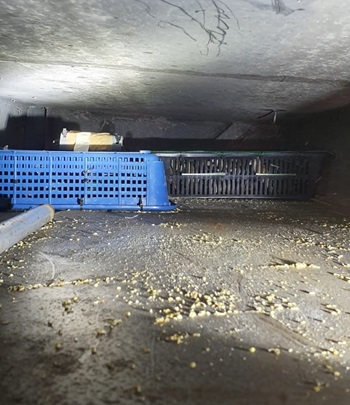
Containers of birds found within the modified compartments (Photo credit: ICA)
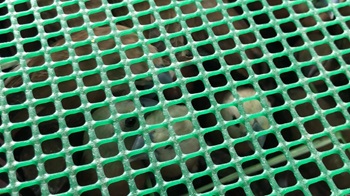
Close-up of the birds in this smuggling attempt (Photo credit: ICA)
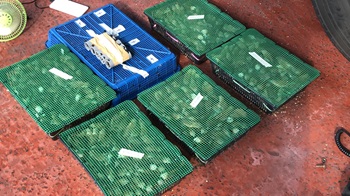
A total of 15 containers of 815 birds were uncovered (Photo credit: ICA)
Annex B – Bird species
|
White-rumped Shama This nationally threatened species is becoming increasingly rare throughout Southeast Asia because of its popularity in the pet trade. In Singapore, it can still be observed in our remaining forests. |
|
| Oriental Magpie-Robin Copsychus saularis The native Oriental Magpie-Robin is a nationally threatened species and was formerly widespread in Singapore. However, its population has been affected, likely due to a combination of habitat loss, poaching and competition from other birds such as the Javan Myna. It is known to sing well and can be found in our nature areas and parks today. The male is easily identified by its striking contrast of black and white feathers. |
|
|
Oriental White-eye The Oriental White-eye is a yellow-green bird which is easily recognised by a prominent white eye-ring. It is highly sought after in the pet trade. |
|
| Scaly-breasted Munia Lonchura punctulata Found throughout Singapore in grasslands, scrub and secondary growth, the underparts of the adult Scaly-breasted Munia are whitish and tipped with dark brown markings, giving it a distinctive scaly effect. It feeds on insects and the seeds of many types of grass. |
|
|
White-headed Munia This native species is locally uncommon. It is usually found in grasslands in large flocks. The adult has a distinctive pale white head. |
|


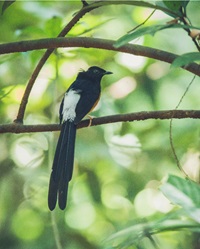 (Photo credit: NParks)
(Photo credit: NParks)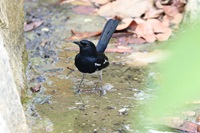 (Photo credit: NParks)
(Photo credit: NParks)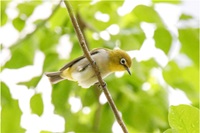 (Photo credit: NParks)
(Photo credit: NParks)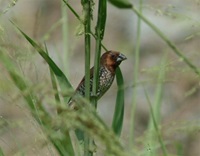 (Photo credit: Cai Yixiong)
(Photo credit: Cai Yixiong)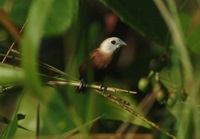 (Photo credit: Cai Yixiong)
(Photo credit: Cai Yixiong)